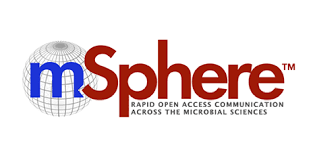Ver ítem
- xmlui.general.dspace_homeCentros e Institutos de InvestigaciónCICVyA. Centro de Investigación en Ciencias Veterinarias y AgronómicasInstituto de VirologíaArtículos científicosxmlui.ArtifactBrowser.ItemViewer.trail
- Inicio
- Centros e Institutos de Investigación
- CICVyA. Centro de Investigación en Ciencias Veterinarias y Agronómicas
- Instituto de Virología
- Artículos científicos
- Ver ítem
Longitudinal follow-up of the immunity to SARS-CoV-2 in health care workers in Argentina : persistence of humoral response and neutralizing capacity after Sputnik V vaccination
Resumen
SARS-CoV-2 vaccine protection has encountered waning of immune response and breakthrough infections. The hybrid immune response generated by the combination of vaccination and infection was shown to offer higher and broader protection. Here, we present a seroprevalence study of anti-SARS-CoV-2 spike/RBD IgG in 1,121 health care workers immunized with Sputnik V and a follow-up of humoral response at 2 and 24 weeks postvaccination (wpv), including
[ver mas...]
SARS-CoV-2 vaccine protection has encountered waning of immune response and breakthrough infections. The hybrid immune response generated by the combination of vaccination and infection was shown to offer higher and broader protection. Here, we present a seroprevalence study of anti-SARS-CoV-2 spike/RBD IgG in 1,121 health care workers immunized with Sputnik V and a follow-up of humoral response at 2 and 24 weeks postvaccination (wpv), including neutralizing antibody response (NAT) against ancestral, Gamma, and Delta variants. The first seroprevalence study showed that among 122 individuals with one dose, 90.2% were seropositive versus 99.7% seropositivity among volunteers with the complete two-dose regimen. At 24 wpv, 98.7% of the volunteers remained seropositive, although antibody levels decreased. IgG levels and NAT were higher in individuals that had acquired COVID-19 previous to vaccination than in naive individuals at 2 and 24 wpv. Antibody levels dropped over time in both groups. In contrast, IgG levels and NAT increased after vaccine breakthrough infection. At 2 wpv, 35/40 naive individuals had detectable NAT against SARS-CoV-2 Gamma and 6/40 against Delta. In turn, 8/9 previously infected individuals developed a neutralizing response against SARS-CoV-2 Gamma and 4/9 against Delta variants. NAT against variants followed a trajectory similar to NAT against ancestral SARS-CoV-2, and breakthrough infection led to an increase in NAT and complete seroconversion against variants. In conclusion, Sputnik V-induced humoral response persisted at 6 months postvaccination, and hybrid immunity induced higher levels of anti-S/RBD antibodies and NAT in previously exposed individuals, boosted the response after vaccination, and conferred wider breadth of protection.
IMPORTANCE
Since December 2020, Argentina has begun a mass vaccination program. The first vaccine available in our country was Sputnik V, which has been approved for use in 71 countries with a total population of 4 billion people. Despite all the available information, there are fewer published studies on the response induced by Sputnik V vaccination compared to that of other vaccines. Although the global political context has paralyzed the verification by the WHO of the efficacy of this vaccine, our work aims to add new clear and necessary evidence to Sputnik V performance. Our results contribute to general knowledge of the humoral immune response developed by vaccines based on viral vector technology, highlighting the higher immune protection conferred by hybrid immunity and reinforcing the importance of completing vaccination schedules and booster doses to maintain adequate antibody levels.
[Cerrar]

Autor
Castro, Eliana Florencia;
Acosta, Julián;
Moriena, Lucía;
Rios Medrano, Mayra;
Cibello, Malena Tejerina;
Codino, Eduardo;
Taborda, Miguel Ángel;
Álvarez, Diego E.;
Cavatorta, Ana;
Fuente
mSphere 8 (3) : e0066222 (June 2023)
Fecha
2023-06
Editorial
American Society for Microbiology
ISSN
2379-5042
Formato
pdf
Tipo de documento
artículo
Palabras Claves
Derechos de acceso
Abierto
 Excepto donde se diga explicitamente, este item se publica bajo la siguiente descripción: Creative Commons Attribution-NonCommercial-ShareAlike 2.5 Unported (CC BY-NC-SA 2.5)
Excepto donde se diga explicitamente, este item se publica bajo la siguiente descripción: Creative Commons Attribution-NonCommercial-ShareAlike 2.5 Unported (CC BY-NC-SA 2.5)


